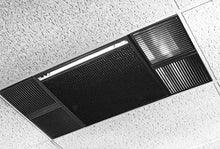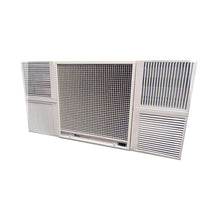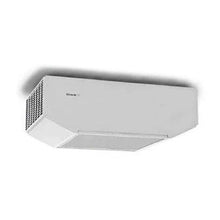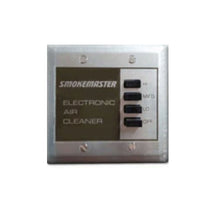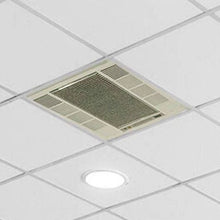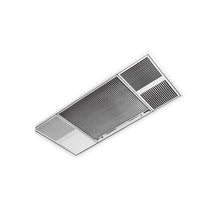Navigating the Air: The Complete Guide to Air Filtration for Cannabis Grow Operations
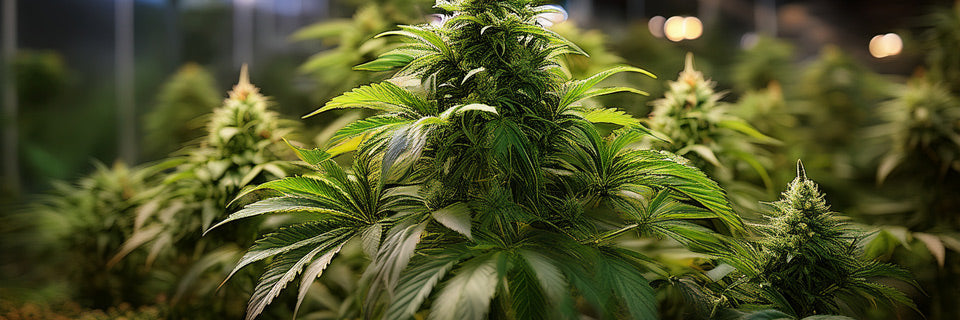
You’ve dedicated countless hours to cultivating the perfect cannabis plants. You’ve mastered the art of lighting, watering, and nutrient cycles, but there’s one invisible factor that can make or break your harvest: the air. Whether you’re a home grower with a small tent or a commercial cultivator with a large-scale operation, controlling the air quality in your grow room is just as important as managing your soil or hydro system. From the distinct, potent aromas to the unseen threat of mold spores and other airborne contaminants, what’s floating in your grow space can directly impact the health of your plants and the quality of your final product.
The challenges of managing air in a grow operation are twofold. First, there's the odor. The pungent scent of cannabis, while desirable for connoisseurs, can be a major issue for a grow operation, attracting unwanted attention and potentially violating local regulations. This is a common pain point for both home growers and large facilities. The second challenge, and arguably the more critical one, is controlling the invisible contaminants that threaten your crop. Fungi, bacteria, pollen, and dust can all travel through the air, landing on your plants and leading to significant problems like powdery mildew or botrytis. Ignoring these airborne threats can lead to a ruined harvest and a major financial loss.
These air quality issues are more than just a nuisance; they are a direct threat to your operation's success and reputation. According to a 2021 study in the journal Cannabis and Cannabinoid Research, airborne fungi are a significant source of contamination in cannabis cultivation facilities. The study identified several common fungal species that can lead to crop destruction and pose potential health risks to consumers. It’s clear that a passive approach to air quality simply won't cut it. For a profitable and sustainable operation, you need a proactive, effective strategy for air filtration. As Commercial Air Purifiers, LLC, we understand these challenges intimately and are here to provide a clear, expert perspective on how to tackle them head-on.
The Science of Air: Odors and Contaminants in a Cannabis Grow
Understanding what you’re up against is the first step to solving the problem. The characteristic smell of a cannabis grow is caused by volatile organic compounds (VOCs), primarily terpenes. These aromatic molecules evaporate from the plant’s surface and become airborne. While they are a natural part of the plant’s chemistry and contribute to its flavor and effect profile, their strong odor can be difficult to contain. Effective odor control is not about masking the scent but about capturing and neutralizing these airborne molecules before they can escape the grow room.
The threat of airborne contaminants is a bit more complex. A cannabis grow room, with its high humidity and warm temperatures, is a perfect breeding ground for mold and mildew. Fungi like Aspergillus and Botrytis cinerea (the cause of bud rot) release microscopic spores that can travel through the air and land on plant material. Once a spore finds a suitable spot, it can germinate and begin to spread, often leading to irreversible damage to your plants. A 2022 report from the U.S. Environmental Protection Agency (EPA) on indoor air quality highlights how crucial ventilation and filtration are in managing biological contaminants. They state that "moisture control is the key to mold control," and proper air filtration systems can significantly reduce the concentration of mold spores, preventing them from settling and proliferating.
Other airborne particles also pose a risk. Dust, pollen from other plants, and even pet dander can all find their way into a grow room. These particles can coat the leaves, blocking light absorption and potentially introducing other microbes. Effective air filtration needs to address both gaseous pollutants (VOCs) and particulate matter (spores, dust, etc.) to ensure a truly clean environment.
Strategies for Comprehensive Air Filtration and Odor Control
A successful air filtration strategy is a multi-layered approach that works to address both odors and contaminants. Relying on a single fan or a simple filter won't provide the comprehensive protection your plants need.
The first line of defense is a powerful carbon filter. These cylindrical filters, filled with activated charcoal, are the industry standard for odor control in cannabis cultivation. Activated charcoal is incredibly porous, with a vast surface area that can trap and absorb VOCs and other odor-causing molecules. As air is pulled through the filter by an inline fan, the terpenes and other smelly compounds get caught in the carbon’s microscopic pores, effectively "scrubbing" the air of its odor. For a successful carbon filter setup, it’s crucial to match the filter size and airflow capacity to your specific grow space. An undersized filter or a weak fan won't be able to effectively process the volume of air needed to eliminate the smell.
While carbon filters are excellent for odor, they are not designed to capture microscopic spores and bacteria. This is where a dedicated air purifier comes into play. Solutions like air purifiers can help when you need to address a broader range of airborne threats. A high-efficiency particulate air (HEPA) filter, for example, is the gold standard for capturing tiny particles. A true HEPA filter is certified to capture at least 99.97% of airborne particles 0.3 microns in size, which includes mold spores, dust, pollen, and some bacteria. Integrating a HEPA-based air purifier into your grow room’s ventilation system, or even as a standalone unit, can significantly reduce the concentration of these harmful pathogens, protecting your plants from infection and ensuring a cleaner, safer final product.
For even more advanced protection, some air purifiers utilize photocatalytic oxidation (PCO) or UV-C light technology. PCO technology uses UV light and a catalyst to create a reaction that breaks down VOCs and other pollutants at the molecular level, effectively destroying them. Similarly, UV-C lamps can kill or inactivate microorganisms like mold, bacteria, and viruses as they pass through the purifier, preventing them from reproducing and causing harm. While these technologies are powerful, they should be used as a supplement to a robust carbon and HEPA filtration system, not as a replacement.
The Role of Air Circulation and Pressure
Beyond the filters themselves, the way air moves through your grow room is a critical factor in both odor control and contaminant prevention. Proper air circulation is essential for a healthy cannabis grow. It helps strengthen stems, prevents stagnant pockets of air where mold can thrive, and ensures that all parts of the plant receive fresh CO2.
Creating a negative pressure environment within your grow space is a best practice for odor control. This means that the air pressure inside the grow room is slightly lower than the pressure outside. A negative pressure setup ensures that any air that escapes the room is pulled in through a vent, rather than pushed out through a crack or opening. This is achieved by having your exhaust fan and carbon filter setup pull more air out of the room than your intake fans are bringing in. This strategy is a highly effective way to guarantee that any air leaving your grow operation has been thoroughly scrubbed of its odor.
For those running large commercial facilities, balancing air pressure and flow is a complex engineering task. It often requires a combination of high-capacity fans, ductwork, and specialized air handling units. However, even for a smaller home grow, understanding the principle of negative pressure can make a world of difference in keeping your operation discreet and your air quality pristine.
Integrating Air Purifiers into Your Workflow
Incorporating air purifiers into your grow operation isn’t just about buying a piece of equipment; it's about making it a part of your regular cultivation routine. For example, if you're dealing with a pest or fungal outbreak, running a portable, HEPA-based air purifier can help capture and remove airborne spores and microbes that could be spreading the problem. During the flowering phase, when the aroma is at its peak, a powerful carbon filter is non-negotiable.
We’ve heard from countless cultivators how a comprehensive air quality plan has transformed their operations. One commercial grower in Colorado shared how implementing a multi-stage air filtration system—combining a large-scale carbon scrubber with a medical-grade air purifier—not only eliminated all odor complaints from neighbors but also led to a significant decrease in powdery mildew outbreaks. This allowed them to reduce their reliance on fungicides, resulting in a cleaner, more natural product that was more appealing to their customers.
This kind of real-world evidence reinforces our perspective that investing in high-quality air filtration isn’t an expense; it’s an investment in your crop and your business. The peace of mind that comes from knowing you’re providing the best possible environment for your plants, free from unseen threats, is invaluable.
Actionable Steps for a Cleaner Grow Room
No matter the size of your operation, here are some immediate steps you can take to improve your air quality.
First, assess your current setup. Do you have a carbon filter and fan that are properly sized for your space? Is the filter old and in need of replacement? Most carbon filters are effective for about 18 to 24 months before the activated charcoal becomes saturated and loses its ability to trap odors.
Next, consider a dedicated air purifier. While a carbon filter handles odor, a separate HEPA-based air purifier provides a crucial defense against mold spores, dust, and other pathogens. Look for a unit with a high Clean Air Delivery Rate (CADR) that is rated for a space larger than your grow room to ensure it can effectively clean the air multiple times per hour. Place it in a strategic location where it can draw in air from the most contaminated areas.
Finally, don't neglect your overall grow room hygiene. Regularly cleaning your space, sanitizing surfaces, and removing dead plant matter will reduce the sources of airborne contaminants. A good air filtration system works best when it's part of a holistic approach to cleanliness.
Conclusion
Effective air filtration and odor control are no longer optional for serious cannabis cultivators. The health of your plants, the quality of your final product, and the security of your operation all depend on it. By understanding the science of airborne contaminants and implementing a multi-layered strategy that includes powerful carbon filtration, high-efficiency particulate air purification, and smart ventilation, you can create a controlled, clean environment that fosters healthy growth and protects your investment.
As Commercial Air Purifiers, LLC, we are committed to providing the resources and solutions you need to tackle these challenges. The right air filtration system will give you the confidence to grow discreetly and with the peace of mind that your plants are protected from invisible threats. A clean grow room is a successful grow room.
Frequently Asked Questions About Cannabis Grow Room Air Quality
Why is it important to control humidity and temperature in my grow room?
Controlling humidity and temperature is crucial because they are the primary drivers of mold and mildew growth. Mold spores thrive in warm, humid conditions. By maintaining a stable environment, you reduce the likelihood of spores germinating on your plants. An air purifier with a HEPA filter can then capture any remaining airborne spores before they have a chance to settle.
Can I just use an exhaust fan and open a window?
Relying on an open window is not an effective solution. It provides no odor control and can introduce a host of new contaminants, including dust, pollen, and pests, directly into your grow space. A closed-loop system with proper filtration is the only way to ensure the air entering and leaving your grow room is clean and controlled.
How do I know when to replace my carbon filter?
The most obvious sign that your carbon filter needs to be replaced is when you start to smell the cannabis odor escaping your grow room. Most manufacturers recommend replacing them every 12 to 24 months, but this can vary depending on the filter's quality, the size of your space, and the intensity of the odor you are managing. A good practice is to regularly check the air for any faint smells and plan for a replacement at least once every two years.
What is the difference between a HEPA filter and a carbon filter?
A HEPA filter is designed to capture solid particles like mold spores, dust, and pollen. It does this by physically trapping them in its dense, fibrous material. A carbon filter, on the other hand, is made to absorb gaseous pollutants and odors, like terpenes, through a process called adsorption. They serve two different but equally important functions in a comprehensive air quality system.
Author Bio:
This article was written by the expert team at Commercial Air Purifiers, LLC. With years of experience in indoor air quality solutions, our mission is to provide effective, trustworthy information and products that help people create healthier environments. We believe that clean air is a fundamental building block for success, whether you're managing a complex commercial operation or a small personal project. We are dedicated to sharing our knowledge to empower individuals to make informed decisions about their air quality needs.
Publication Date: September 7, 2025

